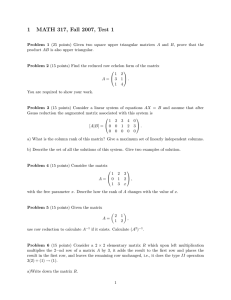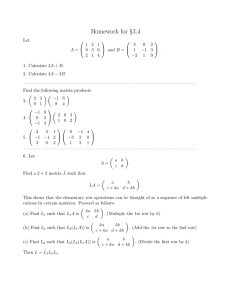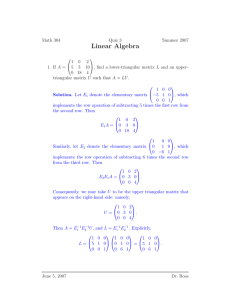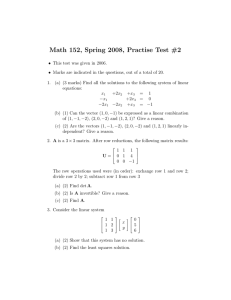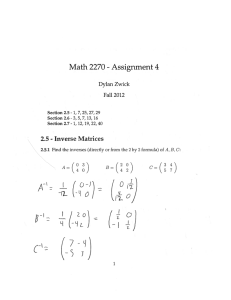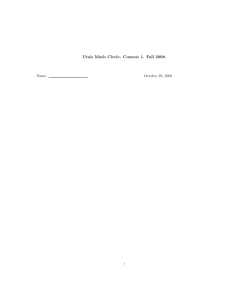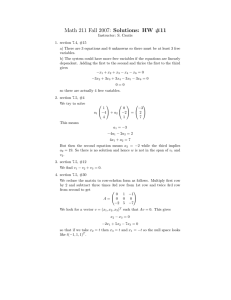Linear Algebra
advertisement
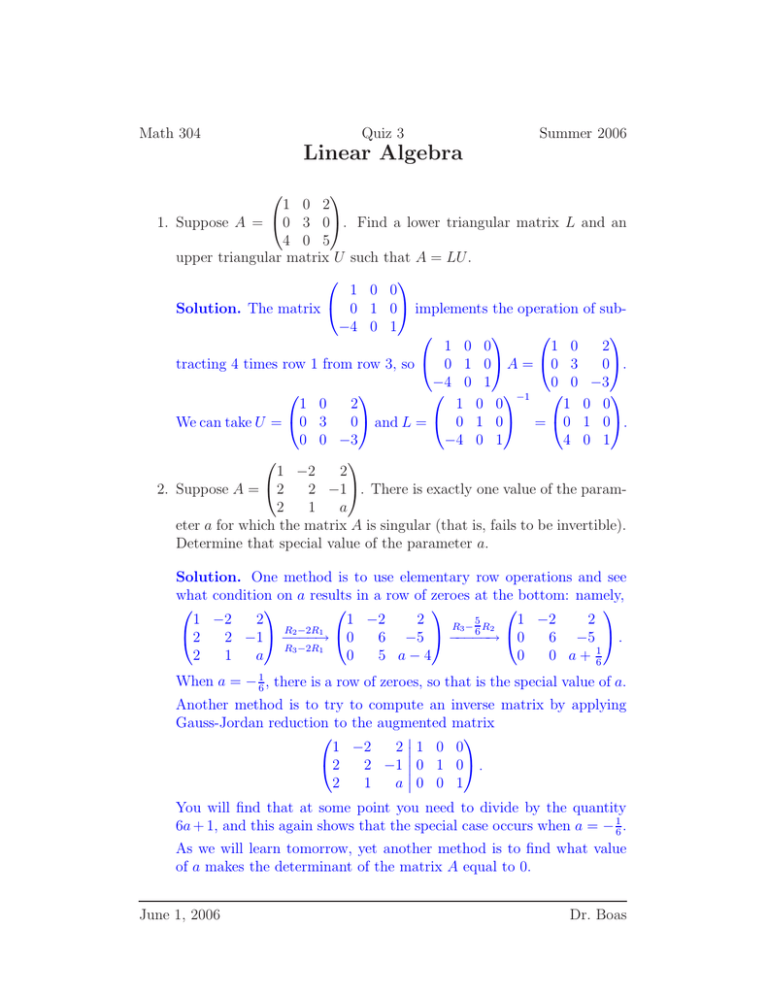
Math 304 Quiz 3 Summer 2006 Linear Algebra 1 0 2 1. Suppose A = 0 3 0. Find a lower triangular matrix L and an 4 0 5 upper triangular matrix U such that A = LU. 1 0 0 Solution. The matrix 0 1 0 implements the operation of sub−4 0 1 1 0 0 1 0 2 0. tracting 4 times row 1 from row 3, so 0 1 0 A = 0 3 −4 0 1 0 0 −3 −1 1 0 2 1 0 0 1 0 0 0 and L = 0 1 0 = 0 1 0. We can take U = 0 3 0 0 −3 −4 0 1 4 0 1 1 −2 2 2 −1. There is exactly one value of the param2. Suppose A = 2 2 1 a eter a for which the matrix A is singular (that is, fails to be invertible). Determine that special value of the parameter a. Solution. One method is to use elementary row operations and see what condition on a results in a row of zeroes at the bottom: namely, 1 −2 2 1 −2 2 5 1 −2 2 R − R 3 2 R2 −2R1 6 2 2 −1 −− 6 −5 −−−− 6 −5 . −−→ 0 −→ 0 R3 −2R1 2 1 a 0 5 a−4 0 0 a + 61 When a = − 61 , there is a row of zeroes, so that is the special value of a. Another method is to try to compute an Gauss-Jordan reduction to the augmented 1 −2 2 1 0 2 2 −1 0 1 2 1 a0 0 inverse matrix by applying matrix 0 0 . 1 You will find that at some point you need to divide by the quantity 6a + 1, and this again shows that the special case occurs when a = − 16 . As we will learn tomorrow, yet another method is to find what value of a makes the determinant of the matrix A equal to 0. June 1, 2006 Dr. Boas
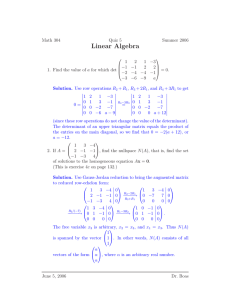
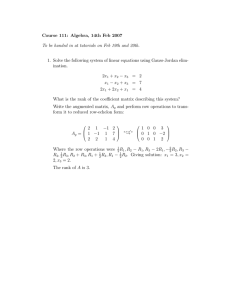
![Quiz #2 & Solutions Math 304 February 12, 2003 1. [10 points] Let](http://s2.studylib.net/store/data/010555391_1-eab6212264cdd44f54c9d1f524071fa5-300x300.png)
